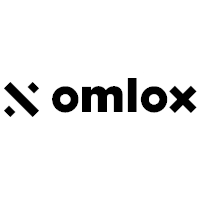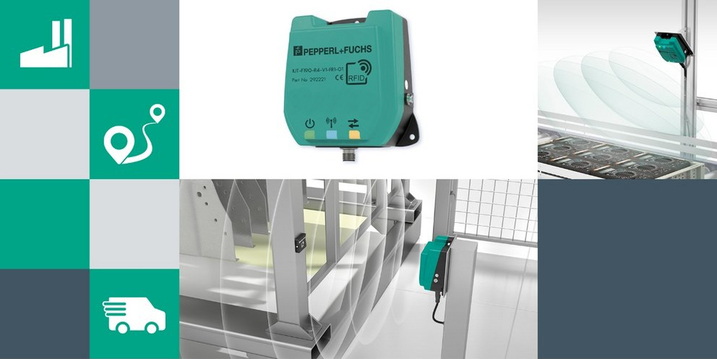omlox—The Asset Tracking Standard

The Industry-4.0-proof tracking of orders, goods, transport vehicles, tools and the safe navigation of autonomous guided vehicles (AGV) and drones is predicated on powerful real-time locating services. With omlox, a new open and interoperable standard in industrial locating is now available, contributing to this shift towards fully automated and paperless processes in smart factories. Developed by numerous global players from OT and IT, omlox combines knowledge and products from a wide range of companies in order to mirror all industrial expectations when it comes to real-time locating.
Administered by the well-respected standardization organization PNO, the omlox ecosystem for the first time offers plug-and-play interoperability of a wealth of products and locating technologies (such as UWB, Wi-Fi, GPS, 5G, RFID, and Bluetooth). As omlox is based on open interfaces, any company can use the standard and participate in its future development.
Benefits of omlox
- Makes locating technology cost-effective and therefore usable in a wide range of scenarios
- Even more accurate locating down to 10 cm
- Open and interoperable (no lock-in effect)
- Display of all elements in a smart factory map
- Self-locating of mobile elements and multi-tag tracking in real time
- Seamless tracking of assets across technology boundaries—both indoors and outdoors
- Can be used in conjunction with existing locating services (retrofit)
- Easy to implement (plug and play)
- Significantly reduces costs by eliminating expensive integration projects and reducing the amortization costs for new applications
- Supported by a broad consortium, hence offering large product selection
What Pepperl+Fuchs Offers for omlox

We believe that the open standard for industrial localization is essential for implementing Industry 4.0 communication on a large scale and beyond the boundaries of factories and facilities.
As a market leader in factory automation, we have extensive experience with developing and implementing a wide range of technologies, including sensors with various sensing principles and interface technologies, such as IO-Link or AS-Interface, and an extensive portfolio of RFID (Radio Frequency Identification) devices. This identification method is a central component of the omlox standard.
How Does It Work?
RFID uses radio waves to identify objects automatically without making contact. Tags serve as data memories. The passive versions of these tags do not require their own voltage supply, meaning that unlike most other localization technologies, there is no need to change the battery. The tags transmit information relating to products, goods, and people, and allow data flow and material flow to be combined in the most effective way. They are used to store all process-relevant information locally on the object, which means that production can be controlled on the basis of the object.
Track-and-trace applications allow raw materials and products to be assigned and tracked in a clear manner. Wireless technology makes it possible not only to read object information, but also to adapt this information if required. Read/write devices can detect tags from a long distance without making direct visual contact, while UHF (ultra-high frequency) makes it possible to read multiple tags with a high level of efficiency. The tags can also be clearly identified around the world. Control interfaces process the information from the read/write devices and pass it on to higher-level systems.
Application Examples
Intelligently combining RFID with other technologies such as UWB, 5G, and GPS within the framework of the omlox standard creates—for the first time—a completely continuous information flow that extends far beyond the factory doors. If a truck's cargo area is equipped with RFID read/write devices that have been modified for the omlox standard, the status and location of individual goods can be verified during transportation via GSM and 5G. This information can be transferred to higher-level software systems such as ERP or MES. Any transport delays can be reacted to swiftly, supply chains can be optimized, and goods can be stored more efficiently. Pepperl+Fuchs' portfolio comprises several RFID read/write devices that are suitable for the recently released omlox standard and can support such applications.
The "DeepHub®" developed by our long-standing partner Flowcate (formerly Heidelberg Mobil) is particularly suitable as middleware for implementing RTLS applications. As the leading implementation of the omlox standard, DeepHub offers all the on-board tools needed for seamless integration of a wide range of localization technologies—regardless of manufacturer or hardware. Combining tag information captured by our RFID read/write devices with a UWB tracking system via DeepHub's Mobile Zone Extension (MZE) provides complete visibility into material and goods flows. This results in significantly reduced operational delays and lower total cost of ownership.
Read more about the potential of DeepHub in combination with RFID technology in Flowcate's blog post:
Contact Us
If you are interested in realizing omlox applications with RFID technology from Pepperl+Fuchs, please use the following form. Our experts are looking forward to your request!









 +49 621 776-0
+49 621 776-0